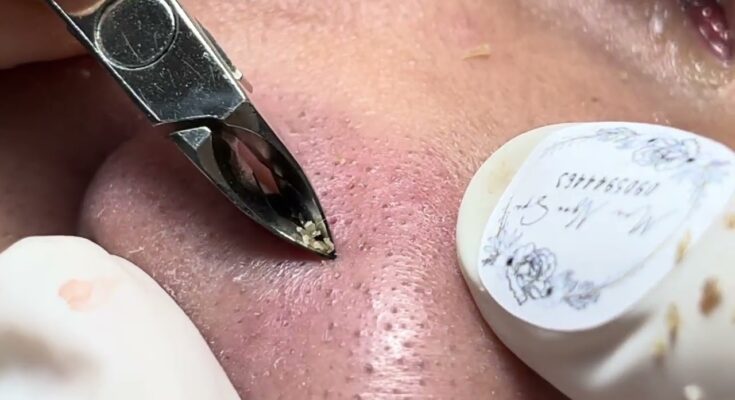Acne on the nose is common and can be treated effectively with a combination of skincare practices and treatments. Here’s a guide to help manage and treat acne on the nose:
Causes of Acne on the Nose:
- Excess oil production: The nose has a higher concentration of sebaceous glands, which can lead to clogged pores.
- Clogged pores: Dead skin cells and oil can combine to form comedones (blackheads and whiteheads).
- Bacteria: The presence of bacteria like Propionibacterium acnes can cause inflammation and lead to pustules or cysts.
- Hormonal fluctuations: Hormonal changes (due to puberty, menstruation, or stress) can cause an increase in oil production.
- Diet and lifestyle: Certain foods, especially high-glycemic foods, or stress, may contribute to flare-ups.
Acne Treatment Options:
- Cleanse Regularly:
- Use a gentle cleanser twice daily to remove excess oil, dirt, and impurities. Avoid harsh scrubbing, as it can irritate the skin and worsen acne.
- Look for cleansers with salicylic acid or benzoyl peroxide, which can help clear clogged pores and reduce acne-causing bacteria.
- Exfoliate Gently:
- Exfoliating helps to remove dead skin cells, preventing clogged pores. Use a chemical exfoliator with salicylic acid (a beta hydroxy acid) or glycolic acid (an alpha hydroxy acid) rather than physical exfoliants (scrubs), which can be too harsh on acne-prone skin.
- Topical Treatments:
- Benzoyl Peroxide: This helps to kill acne-causing bacteria and reduce inflammation.
- Salicylic Acid: Works to deep clean pores and reduce blockages.
- Retinoids (Retinol): Over-the-counter or prescription-strength retinoids (such as adapalene) help with cell turnover and can prevent clogged pores.
- Sulfur-based treatments: Sulfur can reduce oiliness and prevent new breakouts.
- Use Non-comedogenic Products:
- Make sure all skincare products and makeup are labeled as non-comedogenic to avoid clogging your pores.
- Spot Treatments:
- Apply spot treatments that contain benzoyl peroxide or salicylic acid directly on pimples. These can help to dry out and reduce inflammation in targeted areas.
- Avoid Picking or Squeezing:
- Picking at acne can introduce more bacteria to the area and lead to scarring. Try to avoid touching or popping pimples on your nose.
- Hydrate and Moisturize:
- Even if you have oily or acne-prone skin, it’s important to use a lightweight, oil-free moisturizer to prevent your skin from becoming too dry, which can trigger more oil production.
Professional Treatments:
- Chemical Peels: These exfoliate the skin and can help improve acne and reduce scarring.
- Extraction: A dermatologist or licensed esthetician can extract blackheads or whiteheads without scarring.
- Laser Therapy: Some laser treatments target oil glands and bacteria to reduce acne.
Lifestyle Tips:
- Stress management: Practice stress-relieving techniques like meditation, yoga, or deep breathing exercises, as stress can worsen acne.
- Diet: Reduce the intake of sugary, high-glycemic foods and dairy products, as they may trigger acne in some people.
- Avoid touching your face: Try not to touch your face or rest your hands on your nose, as this can transfer bacteria and oil to your skin.
When to See a Dermatologist:
If acne on your nose (or other areas) is persistent, severe, or causing scarring, it’s best to see a dermatologist. They may prescribe stronger topical treatments, oral medications (like antibiotics or hormonal therapy), or other procedures to address the acne.
Consistency is key when managing acne. It may take a few weeks to see improvement, so be patient with your routine.



